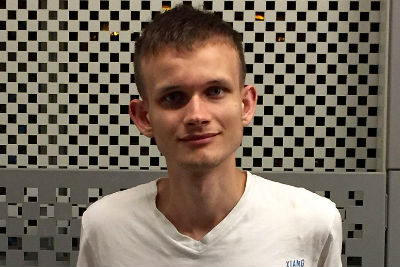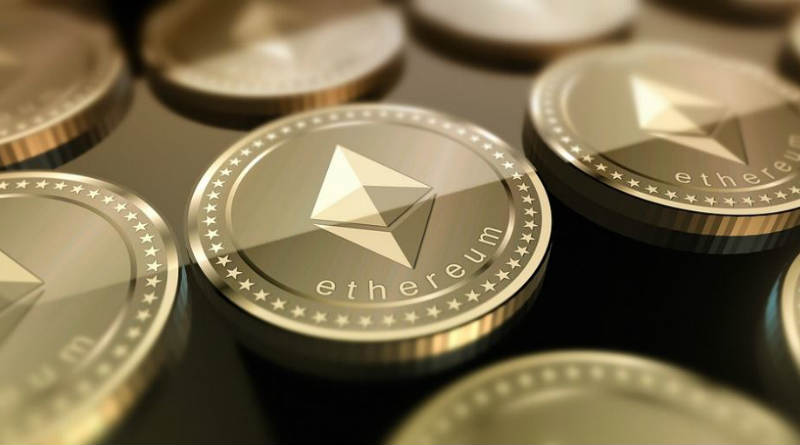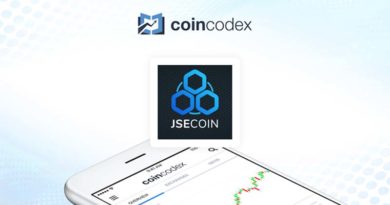Ethereum Platform Explained
Ethereum stands tall as a revolutionary decentralized platform, distinguished by its unique protocol. At its core, the Ethereum Blockchain is designed to execute the programming code of diverse decentralized applications, unlocking a realm of possibilities in the digital landscape.
Fueling the entire Ethereum ecosystem is the cryptocurrency known as Ether, denoted by the ticker symbol ETH. Spearheaded by the visionary Vitalik Buterin, Ethereum has become a powerhouse in the world of blockchain technology.
Unraveling the Essence of Ethereum
In the ever-evolving realm of blockchain, Ethereum takes center stage with its groundbreaking decentralized platform. The core philosophy of Ethereum lies in providing a robust infrastructure for decentralized applications (DApps) to thrive. Unlike traditional centralized systems, Ethereum empowers users to engage in a trustless and transparent environment, eliminating the need for intermediaries.
The Ethereum Blockchain is not merely a ledger; it is a dynamic playground for developers and innovators. Its unique protocol enables the execution of smart contracts, self-executing contracts with the terms of the agreement directly written into code. This feature fosters a new era of automation and trust, reshaping the way digital transactions unfold.

Navigating the Ethereum Ecosystem
At the heart of the Ethereum ecosystem lies Ether, the native cryptocurrency that fuels the entire network. Denoted by the symbol ETH, Ether plays a pivotal role in facilitating transactions, executing smart contracts, and ensuring the seamless operation of decentralized applications.
Unlike traditional fiat currencies, Ether operates within a decentralized framework, free from the influence of central banks or governments. This decentralization not only enhances security but also fosters a global and borderless financial system. Users can transfer Ether across borders without the need for intermediaries, showcasing the true power of decentralized finance (DeFi).
Vitalik Buterin: The Visionary Architect
No exploration of Ethereum is complete without delving into the genius behind its creation – Vitalik Buterin. As the co-founder of Ethereum, Buterin envisioned a platform that transcends the limitations of traditional blockchain networks. His vision was not merely about digital currencies but rather about building a decentralized world computer.
Buterin’s foresight led to the development of Ethereum, a platform that goes beyond simple transactions. It enables the creation of diverse decentralized applications, from financial services to gaming and beyond. His commitment to openness and collaboration has positioned Ethereum as a community-driven project, constantly evolving to meet the changing needs of the digital landscape.
The Future of Ethereum
As Ethereum continues to push the boundaries of innovation, its impact on the digital landscape is undeniable. The platform’s adaptability and commitment to decentralization make it a formidable player in the world of blockchain technology. With ongoing upgrades and improvements, Ethereum is poised to shape the future of decentralized finance, smart contracts, and beyond.
In conclusion, Ethereum, Ether, and the visionary Vitalik Buterin collectively represent a paradigm shift in the realm of blockchain technology. From providing a platform for decentralized applications to redefining global finance, Ethereum stands as a testament to the power of innovation and decentralization. As we navigate the digital frontier, Ethereum remains a beacon of possibility, driven by the relentless pursuit of a decentralized and trustless future.
Ethereum platform code is Solidity which is a language code based on JavaScript. This fact is a big advantage for the Ethereum platform above the bitcoin because Java Script is a well-known language code and not like C++ as most of the Bitcoin Network is based on.
In order to create a smart contract, there is a need for “GAS” – Which is being paid by the Ether (the coin itself) – as a fee.
The Ether quantity is unlimited, not like bitcoin which has only 21 million coins. Despite the unlimited Ether quantity, there is a yearly limitation of 18 million Ether that can be spread to the market and this is being made by Ether mining using the ethash algorithm (Dagger Hashimoto)
Vitalik Buterin Co-founder of Ethereum

An ICO is a fundraising method where a new cryptocurrency project sells its native tokens to early investors in exchange for established cryptocurrencies, usually Bitcoin or Ethereum. Ethereum’s blockchain, specifically designed to support smart contracts, became the preferred choice for hosting ICOs due to its programmable and versatile nature.
Breakdown of the relationship between ICOs and Ethereum:
Smart Contracts as Fundraising Tools:
Ethereum introduced the concept of smart contracts, self-executing contracts with the terms directly written into code. ICOs leverage this technology to create and deploy smart contracts that govern the token sale. These contracts automatically execute the distribution of newly created tokens to contributors once certain predefined conditions are met.
ERC-20 Standard Tokens:
Ethereum’s ERC-20 token standard became the blueprint for creating fungible tokens. Most tokens issued during ICOs on the Ethereum platform adhere to this standard, ensuring compatibility with various wallets and exchanges. ERC-20 tokens represent assets or utilities within the Ethereum ecosystem and are easily transferable among users.
Ethereum as the Base Currency:
During ICOs, Ethereum is commonly used as the primary currency for investment. Participants send ETH to the smart contract address, and in return, they receive the project’s native tokens. Ethereum’s widespread acceptance and liquidity make it a convenient and widely accepted means of contributing to ICOs.
Decentralized Nature:
Ethereum’s decentralized nature aligns with the ethos of many blockchain projects seeking to raise funds through ICOs. By conducting an ICO on Ethereum, projects can tap into a global pool of investors without relying on traditional financial intermediaries. This decentralization fosters a more inclusive and borderless fundraising environment.
Ethereum’s Impact on ICO Popularity:
Ethereum’s smart contract capabilities significantly contributed to the surge in popularity of ICOs. The ease of creating and deploying tokens on the Ethereum blockchain lowered the barriers for new projects, allowing them to attract funding directly from the cryptocurrency community. However, it’s important to note that the ICO landscape has evolved, with other fundraising methods gaining prominence over time.
In summary, Ethereum and ICOs share a symbiotic relationship. Ethereum’s innovative smart contract functionality and the ERC-20 token standard provided a robust foundation for projects to launch their fundraising campaigns. ICOs, in turn, fueled the growth and adoption of Ethereum, solidifying its position as a groundbreaking platform for decentralized applications and token creation.
Unraveling the Ethereal Precision: A Deeper Look into Ether’s Numerical Architecture
In the intricate landscape of cryptocurrency, each digital asset holds a unique numerical identity that distinguishes it from the rest. While Bitcoin and Ether share the common ground of being decentralized cryptocurrencies, their underlying structures vary significantly. This article delves into the numerical intricacies of Ether, focusing on its decimal precision and the smallest unit, Wei.
Decoding Ether’s Decimal Precision
One fundamental aspect that sets Ether apart from its counterparts, notably Bitcoin, is its decimal precision. The Bitcoin, recognized for its eight zeros following the decimal point, takes a backseat when compared to Ether’s staggering eighteen zeros in the same context.
The decimal precision in Ether is a crucial element in its operational framework. It enables users to engage in microtransactions and intricate smart contract operations with unparalleled accuracy. This expanded precision, represented by the numerous zeros, allows for a more versatile and fine-tuned approach when dealing with fractional amounts of Ether.
Navigating Ether’s Smallest Unit: The Mighty Wei
In the realm of Ether, the smallest unit reigns supreme, known as Wei. Each Wei holds a microscopic value, signifying 10^-18 in numerical terms. To put it into perspective, this minuscule unit equates to 0.00000000000000001 in a tangible numerical representation.
Wei serves as the bedrock of Ether’s granularity, enabling transactions at an unprecedented level of detail. The existence of such a fractional unit underscores Ether’s commitment to versatility, ensuring that even the most minute transactions can be accommodated within its ecosystem.
The Significance of Ether’s Precision
The extended decimal precision of Ether is not merely a numerical quirk but a strategic element that amplifies its utility. In a digital landscape where accuracy and efficiency are paramount, Ether’s precision becomes a cornerstone for various applications.
Smart contracts, a hallmark of the Ethereum network, often involve intricate and detailed transactions. The expanded decimal precision ensures that these smart contracts can execute with utmost accuracy, leaving no room for error. This precision is a testament to Ether’s commitment to providing a robust platform for decentralized applications and financial transactions.
Embracing Versatility in the Digital Frontier
Ether’s numerical architecture, with its extensive decimal precision and the inclusion of the Wei unit, encapsulates the essence of versatility. This versatility extends beyond the conventional understanding of cryptocurrency, positioning Ether as a dynamic asset capable of accommodating a spectrum of transactions.
Whether it’s facilitating microtransactions or executing complex smart contracts, Ether’s numerical precision stands as a beacon of innovation. In a world where the digital frontier evolves rapidly, Ether’s commitment to numerical accuracy ensures its relevance and adaptability in an ever-changing landscape.
Conclusion
In the grand tapestry of cryptocurrency, Ether stands out not only for its decentralized nature but also for the meticulous attention paid to its numerical architecture. The extended decimal precision and the existence of the Wei unit showcase Ethereum’s commitment to precision, versatility, and innovation. As the digital landscape continues to evolve, Ether’s numerical intricacies position it as a stalwart in the realm of decentralized finance and application development.
Ethereum Price




